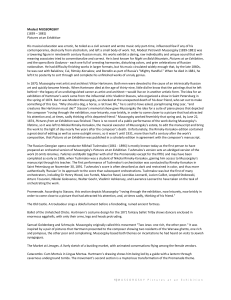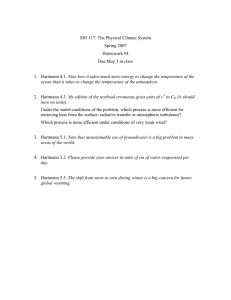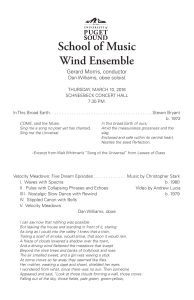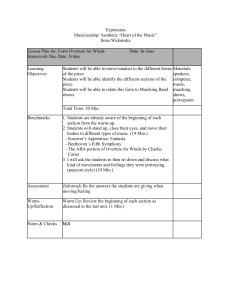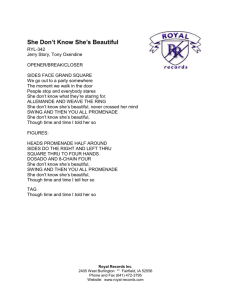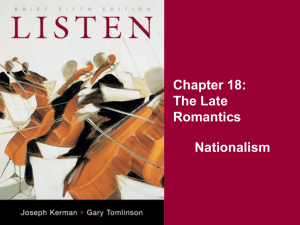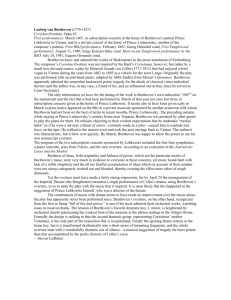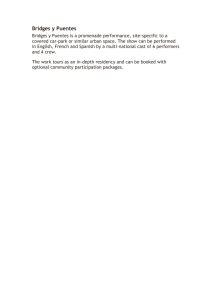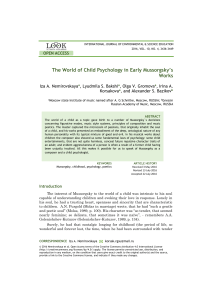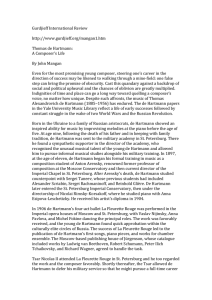Program Notes Coriolan Overture Ludwig van Beethoven (1770
advertisement
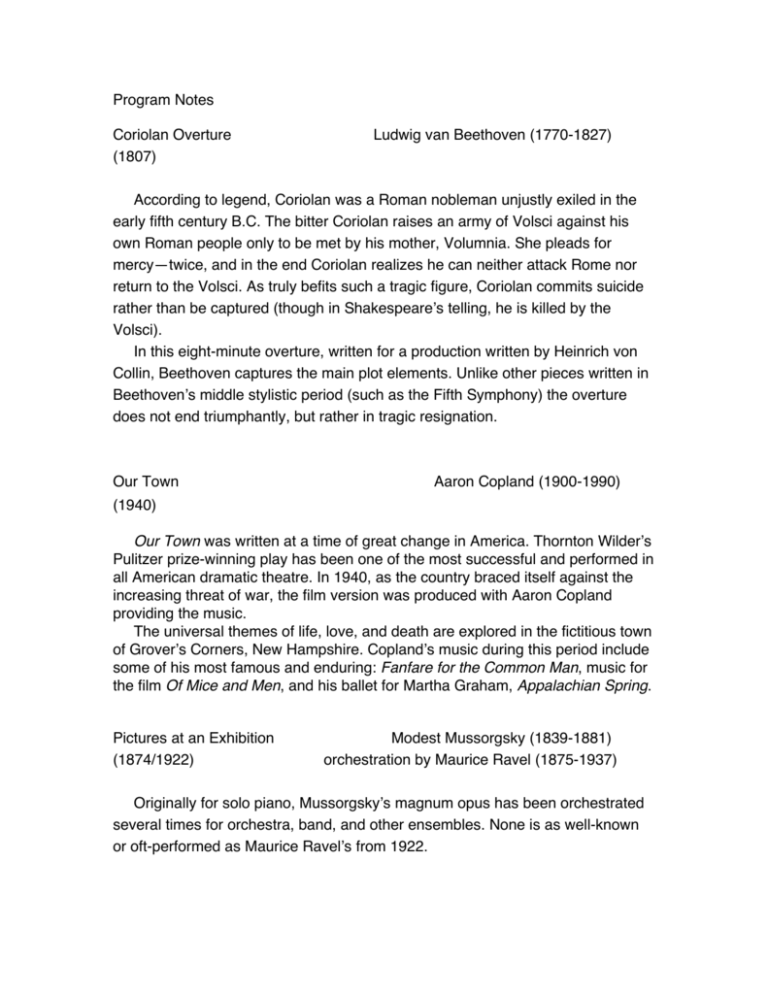
Program Notes Coriolan Overture (1807) Ludwig van Beethoven (1770-1827) According to legend, Coriolan was a Roman nobleman unjustly exiled in the early fifth century B.C. The bitter Coriolan raises an army of Volsci against his own Roman people only to be met by his mother, Volumnia. She pleads for mercy—twice, and in the end Coriolan realizes he can neither attack Rome nor return to the Volsci. As truly befits such a tragic figure, Coriolan commits suicide rather than be captured (though in Shakespeare’s telling, he is killed by the Volsci). In this eight-minute overture, written for a production written by Heinrich von Collin, Beethoven captures the main plot elements. Unlike other pieces written in Beethoven’s middle stylistic period (such as the Fifth Symphony) the overture does not end triumphantly, but rather in tragic resignation. Our Town Aaron Copland (1900-1990) (1940) Our Town was written at a time of great change in America. Thornton Wilder’s Pulitzer prize-winning play has been one of the most successful and performed in all American dramatic theatre. In 1940, as the country braced itself against the increasing threat of war, the film version was produced with Aaron Copland providing the music. The universal themes of life, love, and death are explored in the fictitious town of Grover’s Corners, New Hampshire. Copland’s music during this period include some of his most famous and enduring: Fanfare for the Common Man, music for the film Of Mice and Men, and his ballet for Martha Graham, Appalachian Spring. Pictures at an Exhibition (1874/1922) Modest Mussorgsky (1839-1881) orchestration by Maurice Ravel (1875-1937) Originally for solo piano, Mussorgsky’s magnum opus has been orchestrated several times for orchestra, band, and other ensembles. None is as well-known or oft-performed as Maurice Ravel’s from 1922. Click here for some of the images that inspired Mussorgsky. Promenade Mussorgsky unifies his pictures through several promenades, that is, musical descriptions of his feelings as he arrives at the exhibition and wanders amongst the art. 1. Gnomus Literally, gnome. Hartmann’s drawing is of a shrieking wooden nutcracker. Promenade 2. Il vecchio castello A troubadour (traveling minstrel singer) sings before an ancient, crumbling castle. Promenade 3. Tuileries Hartmann’s picture as seen by the childless Mussorgsky—one can only wonder what Mussorgsky thought of children! Children innocently play and argue in the Parisian garden while consoling mothers mediate. 4. Bydlo Ravel inserts his musical perspective here. Rather than depicting a motionless ox-cart, as did Hartmann and Mussorgsky, Ravel gives it direction. We first hear the ox-cart from afar, but soon it approaches. Once it passes, we follow it until it disappears in the distance. Promenade 5. Ballet des poussins dans leurs coques The picture of the costume designed for the ballet of the unhatched chicks in their shells. 6. Samuel Goldenberg und Schmuyle This movement was originally called “Two Jews: one rich, the other poor.” It was inspired by pictures Hartmann drew of the Warsaw ghetto. 7. Limoges--Le Marche This movement depicts the flurry of activity in the French marketplace. 8. Catacombae--Sepulcrum Romanum In the drawing, Hartmann is being led through the underground Roman catacombs. Cum mortuis in lingua mortua “With the dead in a dead language”—this is a transformation of the promenade theme. 9. La Cabane sur des pattes de poule (Baba-Yaga) This music depicts the wild ride of the Russian folktale witch BabaYaga as she collects human bones to make her supper. 10. La grande porte de Kiev The Great Gate was never constructed, but we hear the grandeur of Hartmann’s design. The bells at the end of the music recall the pealing bells celebrating the return of triumphant troops through the gate.
